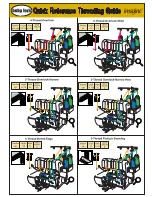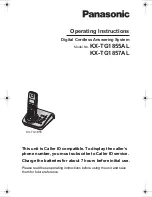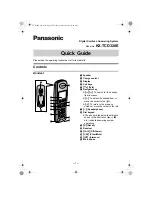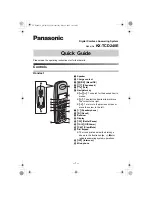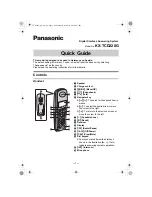
34
- FORM NO. 56043058 Hydro-Retriever™ 3800 / 2042 / BR 1100
RECOVERY SYSTEM
VACUUM / RECOVERY SYSTEM SERVICE MAINTENANCE CHECKLIST
Whenever there is a vacuum problem, it’s best to check over the entire system. Use the checklist below as a guide, to thoroughly check the vacuum system.
Clean built-up dirt from the inside of the squeegee tool.
Replace the squeegee blades if they are nicked or torn.
Inspect the hose between the squeegee tool and the recovery tank, rinse any built-up dirt from the hose. Replace the hose if it is kinked or damaged.
Inspect and make sure the gaskets on the recovery tank covers are sealing and not damaged.
Inspect and clean the vacuum motor float cage and vacuum filter.
Make sure that the recovery tank drain valve seals airtight.
TROUBLESHOOTING GUIDE
If water flows around the ends of the squeegee tool, instead of being pulled into the tool, the vacuum system is not working properly. When a vacuum system
performs poorly, it is usually because of one of the following problems:
Vacuum Leak(s)
– Air flowing into the vacuum system past a bad gasket or leaky hose, damaged tank, or a leaky drain valve. A vacuum leak below the water
line will create turbulence in the recovery tank, causing water to enter the vacuum motor.
Restriction(s)
– Anything that blocks the flow of air through the system. Restrictions may also be caused by built-up debris in the squeegee tool, vacuum hoses,
float cage or wherever the airflow is forced to make a sharp turn.
Both leaks and restrictions decrease the quantity of air flowing through the squeegee tool. The air that does go through the squeegee tool moves slower, so it
has less pick-up power.
Vacuum Electrical Components
– The vacuum systems major electrical components are monitored by the main controller to detect any system function failures
(error codes). The system components covered are the vacuum motor and vacuum solenoid. Detected error codes from the main controller are displayed on the
hour meter LED display as they occur. Note: Reference the
Main Control Board Troubleshooting Guide
in the Electrical System of this manual for specific fault
descriptions and service repair actions.
MAINTENANCE OF VACUUM FILTER AND FLOAT CAGE
See Figure 2. To inspect and clean the vacuum motor foam filter just lift open the tethered Vac Duct Cover
(A)
. Remove the filter by pulling it out from the housing
opening. Clean the filter by vacuum or washing it out in warm water. Note: The filter must be completely dry before reinstalling.
To inspect the vacuum shut off float just open the left rear recovery tank cover to access the float cage assembly (front left in recovery tank). The cage openings
must be kept free of any debris that can restrict maximum airflow. To keep it clean, wipe off with a rag regularly or remove and flush with water. The cage is a
two piece design and can be snapped apart to separate. Note: Another method of accessing the cage float for servicing is to remove the (3)
(B)
Screws and remove
the vacuum duct housing from the recovery tank top opening.
VACUUM MOTOR REMOVAL
WARNING!
Disconnect the battery pack by pushing in the emergency disconnect knob
(12)
before making service repairs.
1
See Figure 2. Drain recovery tank using the attached drain hose.
2
Remove the squeegee tool from the machine. Next swing open the recovery tank, then separate the tank’s support cable to allow service access to the
vacuum motor.
3
See Figure 2. Remove from the bottom side of the machine the (2) item
(C)
Hex Head Screws that secure the vac motor mount Bracket
(D)
to the chassis.
4
From the top of the machine loosen the Hose Clamp
(E)
securing the Vac Hose
(F)
and remove the hose.
5
Loosen the (2)
(G)
Hex Nuts then slide the vac motor assembly forward and remove the plastic Shroud
(H)
from the vacuum motor.
6
Disconnect the vac motor wiring plug from the machine harness, then complete the removal of the vacuum motor assembly.
7
Make inspection and needed service repairs and or motor replacement as required and re-install following the above steps in reverse order.
RECOVERY TANK REMOVAL
WARNING!
Disconnect the battery pack by pushing in the emergency disconnect knob
(12)
before making service repairs.
1
See Figure 2. Drain recovery tank using the attached drain hose.
2
Tip the recovery tank to rear of machine then separate support strap and continue lowering the tank to its full open position. Service Note: Supporting the
tank bottom with a chair or other appropriate device is helpful in both tank installation and removal.
3
Loosen the vacuum motor Hose Clamp
(E)
and pull the hose off from the motor inlet. Next remove the Squeegee Hose
(I)
at the squeegee pickup tube
and from the top of the machine pull the hose up through the frame opening.
4
With the tank properly supported remove the (2) sets of mounting hardware items
(J, K, L & M)
from both ends of the tank mount.
5
Last remove the temporary tank support(s) and slowly lower the tank to the floor.
6
Make inspection and needed service repairs as required and re-install following the above steps in reverse order.
revised 12/02































